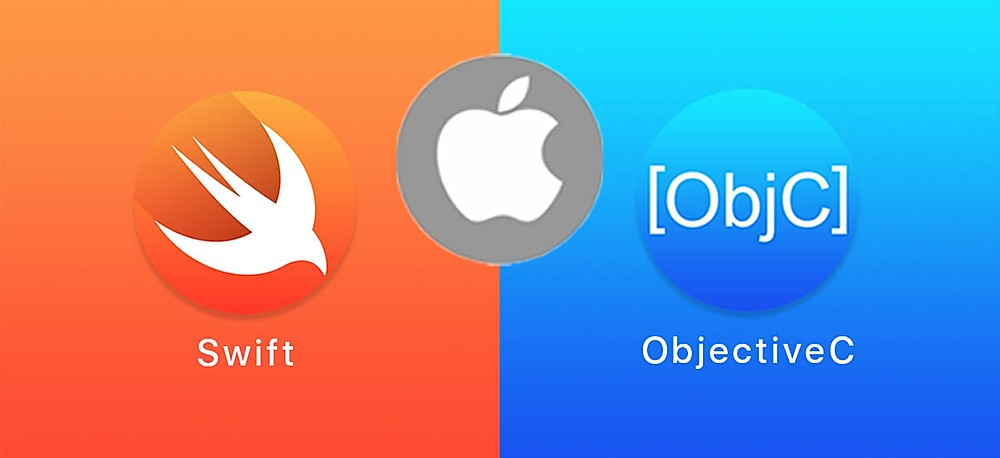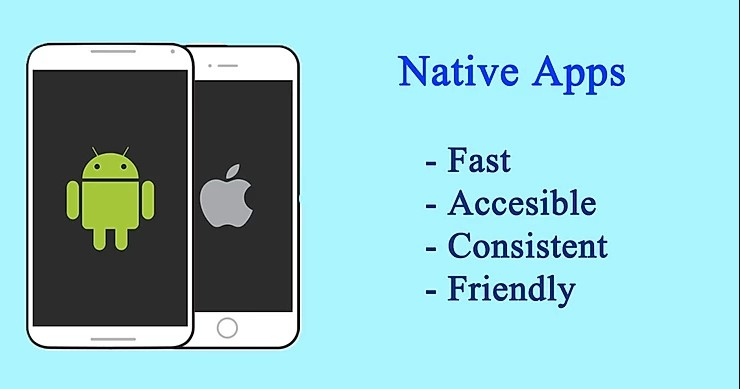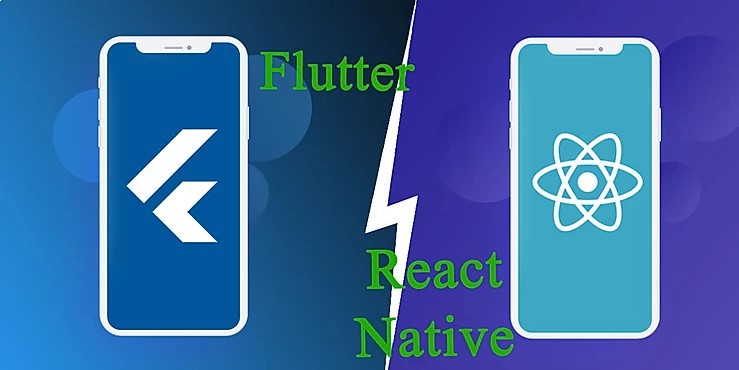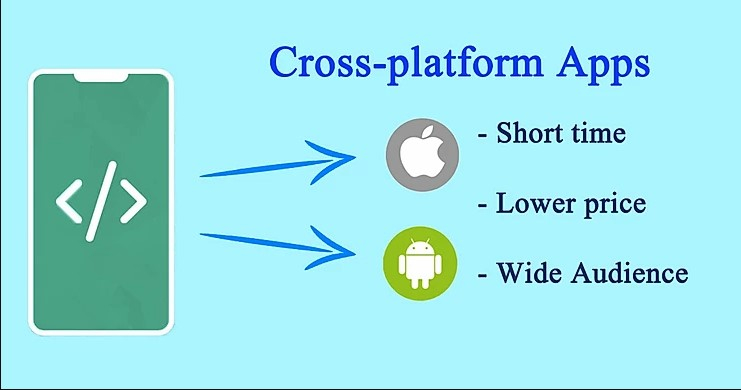Native Apps vs Cross-Platform Apps: What To Choose
Along with the increasing popularity and smartphone usage, more and more people are making use of mobile apps for a range of reasons – to access news and information, shop, play games, engage on social media platforms and other functions. As a result, mobile development companies try hard and make experiments in order to discover the best way to build mobile apps that will look and function great on different smartphones and provide a successful user experience.
However, with the increasing competition between iOS and Android operating systems, it’s somehow difficult to determine which platform will work best for your mobile application. For this time, I’ll uncover the pros and cons of two types of mobile apps: native apps and cross-platform apps, and compare both versions to choose the better one, taking into account their specific function and your requirements.
Native App Features
Native app development is the creation of software programs that run on specific OS platforms. Native development requires that one specific app be built for one target operating system. Native mobile apps don’t run on the web browser. We may install them either from Apple’s App Store or Google’s Play Store. Before installing these apps, let’s form at least a general idea of how these platforms are created.
Native mobile apps are the most accepted type. These apps are coded in application development languages that are accepted by the target platform or operating system. For example, native iOS apps are mainly written in languages Swift or Objective-C while Java or Kotlin are used for native Android apps.

- Objective C is an object-oriented superset of C programming language which is a basis of Apple app development. This language includes dynamic features like method swizzling. It’s the process of changing the implementation of an existing selector. According to this technique, method invocations can be changed at runtime in Objective C. An advantage of Objective C is that it has direct access to the C++ library.
- Swift was launched in 2014 by Apple. Due to static typing and use of optionals, it’s safer. Swift offers support for namespaces, functional patterns, and concise and clear syntax.

- Java is a reputable programming language with vast open-source tools and libraries to help Android native developers. It dominates the enterprise application development world with its extraordinary features such as interoperability and flexibility.
- Kotlin offers a developer-friendly coding structure that is easy to understand and use. This language is safe, concise, interoperable, and tool friendly. Now that we’ve already known what programming languages are used to develop mobile native applications, let’s uncover the advantages and disadvantages of this type of apps.
The Native Apps: Advantages

- High Performance. Native apps interact with APIs directly without depending on plugins or WebViews. Due to minimal dependence, these apps are faster and more responsive.
- Access To New Features. Native apps provide access to all the features offered by the operating system (Android and iOS) of the device.
- Development Environment. The giants like Apple and Google, provide their own development environment tools, interface elements, and SDKs so that both iOS and Android developers invest in native app development due to the benefits they would otherwise miss. These development environments are Android studio for Android by IntelliJ and Xcode for iOS by Apple. This is a great advantage of native apps because here developers overcome any challenge without any additional tool or technique.
- Consistent UI. Mobile application design is better on native apps, due to the fact that these applications are built, using native SDKs. As a result, they provide a better UI consistent with the platform.
- Better Positioning on The Stores. Due to their better performance and user experience, native apps get high positive ratings. It is an important rank standard with the help of which native apps are easily found among the first results on the application stores.
The Native Apps: Disadvantages
- Higher cost and more time. While choosing an application type, people consider the higher price of native apps to be a disadvantage. However, we know that whatever provides good quality costs a higher price. And more time is required to build applications that provide higher performance.
- Limited usage. As we’ve already discussed, native apps are created for specific platforms. For example, the business which provides an app only for iOS platforms may miss the opportunity to reach the part of the audience who are Android users. In order to support multiple devices, separate apps should be developed for different OSs. However, when it comes to quality, it’s better to provide a perfect user experience for only one platform than provide a buggy app for many platforms.
Cross-platform App Features
Even with the help of its name, we may guess that applications with cross-platform development, support devices according to their specific operating systems. Such apps are developed using an intermediate programming language that will work for different platforms. Yet, there hasn’t yet found out a perfect solution that will provide high performance for users on different devices.
Mobile app developers try to make experiments and discover a new mobile development framework that will be both flexible and qualified. However, this is still an insoluble task. The latest cross-platform frameworks that compete to prove their worth and host cross-platform app development are React Native and Flutter.
- React Native framework, created by Facebook, is an open-source mobile app development framework that uses JavaScript to build apps. This framework uses the same design as React to present a nice UI.
- Flutter framework, introduced by Google, is also a free and open source. It’s an SDK that offers developers an easy way to build and deploy visually attractive, natively-compiled applications that support various platforms.

Flutter vs React Native
Both React Native and Flutter are designed to build only the UI of the app. The reason is that both frameworks have an extremely low performance to build the engine. However, although the Flutter is a newbie in the sphere, it is considered to provide better performance.
The Flutter is a rapidly growing community that provides a better look due to rich widgets and offers excellent documentation supported by the Flutter team.
Native vs React Native
Comparing the Native Apps to the React Native Apps, we learn that it's faster to code with React Native, yet longer to debug, as the framework contains more errors. These are mainly related to speed and user experience. React Native offers lower performance than in native apps. The reason is that modules that are responsible for accessing any feature of the smartphone (for example, the camera) have to be written in native technologies. Besides, some functionalities are not available from the React Native libraries. In any case, React Native isn't an advanced technology as breaking changes are possible between its subsequent versions. So, Native wins.
Native vs Flutter
According to Google, the Flutter framework provides an experience that is very close to native apps. Yet, the UI still matters. There is still a need to design the UI of the app for different OSs. In this regard, Flutter offers two different widgets to adapt to design languages: Material Design for Google Design and Cupertino for Apple's iOS Design.
Although these widgets work on the "Flutter vs React Native" competition, they don't make any change in the "Native vs Flutter" competition. Flutter “paints” the UI in its own way, without creating any native component. With Flutter, you may get screen errors or logs that seem to be very confusing. Therefore, the debugging process isn’t at its best. In any case, Native apps are comparably bug-free, fast and accessible. As a result, it offers a better user experience.
The Cross-platform Apps: Advantages

- Shorter Development Time. Developing a cross-platform application requires a shorter time because a single engine is developed with different UIs for different operating systems.
- Affordable Price. While creating a cross-platform app, a single app is created for various platforms. As a result, its costs are relatively lower, yet the quality as well.
- Wider Audience. As cross-platform apps support various operating systems, they are available for a greater number of users.
The Cross-platform Apps: Disadvantages
- Low Performance. As there isn’t any app development language that will highly support multiple operating systems, cross-platform app users face various bugs and issues while using the app.
- User Experience Issues. Although cross-platform apps reach a higher number of people when it comes to offering a robust user experience they lack. The same code cannot work perfectly on different devices. As a result, users experience a lower speed and other issues.
- Missing Development Environment. Unlike the native apps which are provided with all the features the system integrates, there isn’t any officially supported development environment for cross-platform apps. As a result, everything depends on the developer.
Native vs Cross-platform Apps
Getting familiar with all the pros and cons of both Native and Cross-platform apps, there is no chance but to accept that the Native apps always win in the competition.
1. Components: Native apps make use of native features of the operating system. They also allow offline features, which is something not easily possible with cross-platform apps. On the other hand, the Cross-platform apps cannot utilize the native features of the OS because they have limited access to the API.
2. Development time: As a rule, the Native app development process takes twice as much time as cross-platform apps. However, the higher number of issues that we face on cross-platform apps, outweigh this advantage. These issues include:
- More bugs,
- Not so developed community,
- The codes are written in different development environments, and they need to be matched,
- More time is required to test the app because codes are written for two different platforms.
3. User Experience: Integrating a relatively small amount of codes, Cross-platform apps overcome tiny issues, yet arouse greater problems. On the other hand, Native apps offer a fantastic user experience with better performance, higher speed, and better device utilization.
I would like to introduce some bright examples from real life on how different companies and businesses choose the best kind of apps.
- Airbnb was originally using cross-platform apps (React Native) because JS developers worked there. For many years React Native was a great choice for their simple application where the APIs bridge two platforms. Gradually, these APIs didn’t operate exactly the way they wanted and their developers had to dive into the native libraries to make the necessary adjustments. Some examples where native bridges were required to be written include the networking stack, experimentation, internationalization, deep links, navigation, and advanced map features. Eventually, Airbnb chose Native over React Native.
- The global leader of business and finance data - Bloomberg choose native apps because the company has a purpose to change the world to better. Due to 2 different apps - native Android and native iOS, they provide trustworthy access to market data. People trust them, due to the great experience they give.
- Myntra is another bright example. This is an e-commerce platform that put the emphasis on quality and better performance. Initially, the company launched an Android app for its online shop, later they built an iOS app as well. Due to the high performance of the apps, the company not only surpass its target audience but also became an “app-only” platform.
To Sum Up
Considering the above-mentioned statistics, Native apps are surely far superior. They offer higher performance and provide a better user experience. Native apps are the best in performance as they are created for separate platforms. They are more secure and offer better UI.
Native applications obtain the interface of their devices’ operating systems. As a result, the apps look and function like a part of the device. As the native apps stick to specific UI standards for each platform, it enables them to offer an interface the users are already familiar with. Usually, native apps are possible to use offline. This is enough to make them the winner.
As you learned above, some companies risked their time, energy, and budget. They chose cross-platform apps that didn’t work during the time. However, these companies afforded to convert into native apps. If you don’t want to risk, choose the native apps initially.

